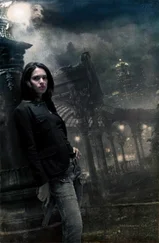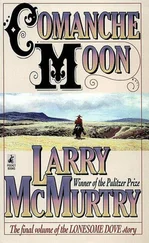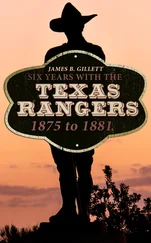Not surprisingly, the sentiments of those soldiers preparing to go to war and of those training them to do so had also changed. An atmosphere of inertia and indifference, a “wait-and-see” attitude, had begun to settle over much of the Army’s rank and file. There was little talk of kicking Charlie’s ass. Younger soldiers talked instead of surviving their tour, while older ones spoke of resignation and early retirement before their next tour. Both looked in vain for some direction from above.
For whatever reasons, the Army was in trouble. As the Bull had predicted while sitting atop his mermite two years before, the Army was indeed “turning itself inside out.”
26. Auburn University: Spring 1972
I don’t quite know how it happened. I never intended to return to Vietnam. Still, in the spring of 1972, while finishing up my bachelor’s work at Auburn and after having spent a brief tour as a battalion S-3 at Fort Benning and undergoing its officer’s advanced course, I found myself on the phone with Infantry Branch, once again requesting duty in the Nam.
“Well, Jim, I quite candidly don’t advise that,” the assignments officer, a major whom I had never seen or talked to before, said in response to my request. “I mean, frankly speaking, we no longer look upon duty in Vietnam as career enhancing, especially repeat tours. And this would be your fourth.”
“Major,” I replied, “I quite candidly don’t give a tinker’s damn about career enhancement at the moment. At the moment, I want to go to Vietnam.”
“Well, Major, if that’s what you really want, I’ll get the orders working this very morning. We still honor voluntary requests for Southeast Asia, and if you insist on so callously ignoring my advice, it’ll just save me from sending some reluctant major back involuntarily on a second tour. Okay?”
Okay. Once more into the breach.
When I made that call, North Vietnam was once again wreaking havoc on its southern neighbor. This time it was the Eastertide offensive, and although I could do little to change the battle’s course, it seemed only fitting that I again heed the trumpet’s call or so I told myself at the time.
Later I concluded that the call was not nearly so noble. In reality, I had simply suffered a mild recurrence of “yellow fever” and wanted to go back because the Nam, if not the most stable, was the most comfortable environment for me. I had spent most of my previous ten years in Vietnam, training or training others to go to Vietnam, or recuperating from having been in Vietnam. And we all feel most comfortable in that world with which we are most familiar. Moreover, it seemed to me that inasmuch as combat was a rarity in a thirty-year career, one ought to spend as much of his time in it as opportunity afforded.
However, as I was soon to discover, this thesis simply no longer applied to duty in the Nam. In the summer of 1972, American combat forces were no longer in the fray.
27. Saigon, Vietnam: July 1972
As the Eastertide offensive faded into but another footnote on Indochina’s long and troubled history, I arrived, again via World Airways, at Tan Son Nhut, the same airfield upon which I had landed ten years earlier when first setting foot on Vietnam’s soil.
We have come full circle, I thought to myself as we deplaned. In ‘62 we were all advisors, of one sort or another, and we all landed at Tan Son Nhut. Now, ten years later, we’re again all advisors, of one sort or another, entering the country at Tan Son Nhut. Cam Ranh must be a ghost town.
Although the war was over for most Americans serving in Vietnam, there were some advisors who were still very much in the thick of it, none more so than those attached to Vietnam’s only airborne division. By a fortuitous stroke of fate, coupled with some politicking and a bit of deviousness on my part, that’s where I was going! Or so I thought.
“I’d like to see the general!” I snapped, glaring at the lieutenant colonel, one of the general’s minions, as he sat behind his desk with a surprised look on his face.
“Whoa there, Major! What’s the problem? Hell, you just got here. Got a plum of an assignment, too.”
“The assignment is the problem, sir.”
All had gone well and according to plan the first two days after my arrival. AAG’s (Army Advisory Group’s) personnel section had confirmed my assignment to the airborne division’s advisory team and, after in-processing me, had sent me on down to the team’s rear detachment in Saigon. There, after meeting the team’s RDC, a captain, I was in-processed a bit further, drew my weapon and field gear, and was told to report to Tan Son Nhut at 0800 hours the following morning. I was to catch a flight north and join the team on the outskirts of Quang Tri.
At 0745 hours the next day I stood on the airfield’s flight line, rucksack at my feet and CAR-15 in hand. That was as close as I ever got to hearing a round fired in anger on my fourth and final tour in the Nam.
At that point a captain from AAG’s personnel section arrived and informed me that the group had a new commander, who had a new assignment philosophy, and that I was being sent to the National NCO Academy in Nha Trang. He had my orders in hand.
Well, we’ll just have to go and get this misunderstanding straightened out, I said to myself, catching a ride with the captain to AAG’s headquarters compound.
By the time I got there, after listening to the captain’s discourse on his new commander’s assignment philosophy, I was steaming. It was very much like reliving my encounter with Lieutenant Colonel Know five years before, but this time there was no Colonel Lich to turn to. I was on my way to Nha Trang.
The National NCO Academy sat astride Highway One on the South China Sea’s coast. Earlier in the war, the academy’s primary task had been to school ARVN’s noncommissioned officer corps; however, at this juncture it was mainly involved in producing new lieutenants for an army that had been bled white in Giap’s Eastertide offensive.
Housed in a small oceanside villa, the U.S. advisory team consisted of four people—a colonel in command, myself, a captain, and one NCO. Our job was to advise and assist the academy’s commandant. In these waning days of America’s involvement in Indochina, that’s what we did—taught second lieutenants to fight a war that had become exclusively theirs.
Most of these young officers—those who survived would go on to become first lieutenants. Few, however, would be promoted to the rank of captain, because when that rank was due there would no longer be an army of the republic—nor would there be a republic.
By early October, rumors of war’s end ran rampant. On the twenty-sixth, rumor seemingly became fact when presidential advisor Henry Kissinger announced that “peace is at hand.” But Doctor Kissinger’s pronouncement was a bit premature. In Paris, North Vietnamese negotiators continued to quibble over the smallest of points at the peace talks.
The U.S. Air Force was finally, mercifully, unleashed on a strategic, no-holds-barred aerial offensive against North Vietnam. Referred to as Linebacker 11, or the Christmas bombings, it was a bombing campaign that the Air Force had pleaded for—and we who fought in the paddies had hoped for—since the war’s beginning.
And it worked. Just eleven days later our enemy called it quits.
We who remained found it ironic, and tragically sad, that what had eluded our negotiators throughout five fruitless years of “peace talks” while our fellow soldiers were dying—was finally brought about by an eleven-day bombing campaign, a campaign our country could have conducted with impunity at any point in the war.
Читать дальше












